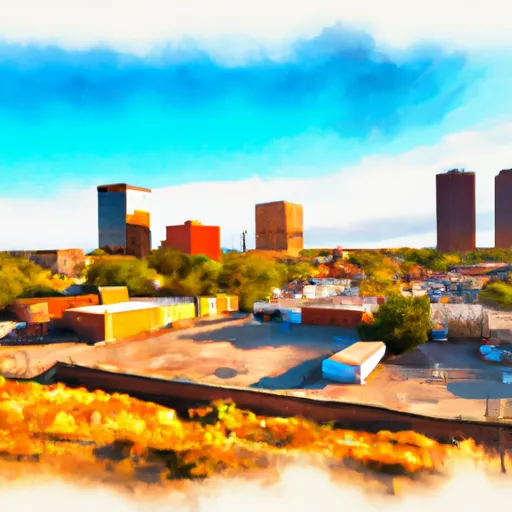-
 Snoflo Premium
Snoflo Premium
Get unlimited access to all our content
With no Ad interruptions! - Start Your Free Trial Login with existing account
Trinchera
Eden Index
Climate
7.4
•
Recreation
•
Community
•
Safeguard
3.0/10

Trinchera is a small town located in Las Animas County, Colorado. Situated in the southern part of the state, Trinchera experiences a semi-arid climate with hot summers and mild winters. The average annual precipitation is around 12 inches, primarily falling as rain during the summer months.
Hydrologically, Trinchera is surrounded by diverse water bodies. The nearby Trinchera Creek and Purgatoire River provide opportunities for fishing and water-based recreational activities. These waterways are known for their populations of various fish species, including rainbow trout and brown trout.
Outdoor enthusiasts visiting Trinchera can enjoy a range of recreational opportunities. The region's picturesque landscapes offer excellent opportunities for hiking, camping, and wildlife viewing. The area is home to abundant wildlife, including deer, elk, and various bird species, making it ideal for nature lovers and wildlife photographers. Additionally, Trinchera is located near the Spanish Peaks Wilderness Area, providing visitors with scenic trails for hiking, backpacking, and horseback riding.
Overall, Trinchera's climate, hydrology, and outdoor recreation opportunities make it an attractive destination for those seeking to immerse themselves in the natural beauty of southern Colorado.
What is the Eden Index?
The Snoflo Eden Index serves as a comprehensive rating system for regions, evaluating their desirability through a holistic assessment of climate health, outdoor recreation opportunities, and natural disaster risk, acknowledging the profound impact of these factors on livability and well-being.
Climate Health Indicator (CHI): 7.4
Trinchera receives approximately
361mm of rain per year,
with humidity levels near 83%
and air temperatures averaging around
11°C.
Trinchera has a plant hardyness factor of
6, meaning
plants and agriculture in this region thrive during a short period during spring and early summer. Most
plants will die off during the colder winter months.
By considering the ideal temperature range, reliable water supplies, clean air, and stable seasonal rain or snowpacks, the Climate Health Indicator (CHI) underscores the significance of a healthy climate as the foundation for quality living.
A healthy climate is paramount for ensuring a high quality of life and livability in a region, fostering both physical well-being and environmental harmony. This can be characterized by ideal temperatures, reliable access to water supplies, clean air, and consistent seasonal rain or snowpacks.
Weather Forecast
Streamflow Conditions
Upper Arkansas
Area Rivers
Upper Arkansas
Snowpack Depths
Upper Arkansas
Reservoir Storage Capacity
Upper Arkansas
Groundwater Levels
Recreational Opportunity Index (ROI):
The Recreational Opportunity Index (ROI) recognizes the value of outdoor recreational options, such as parks, hiking trails, camping sites, and fishing spots, while acknowledging that climate plays a pivotal role in ensuring the comfort and consistency of these experiences.
Access to outdoor recreational opportunities, encompassing activities such as parks, hiking, camping, and fishing, is crucial for overall well-being, and the climate plays a pivotal role in enabling and enhancing these experiences, ensuring that individuals can engage in nature-based activities comfortably and consistently.
Catastrophe Safeguard Index (CSI):
The Catastrophe Safeguard Index (CSI) recognizes that natural disaster risk, encompassing floods, fires, hurricanes, and tornadoes, can drastically affect safety and the overall appeal of an area.
The level of natural disaster risk in a region significantly affects safety and the overall livability, with climate change amplifying these risks by potentially increasing the frequency and intensity of events like floods, fires, hurricanes, and tornadoes, thereby posing substantial challenges to community resilience and well-being.
Community Resilience Indicator (CRI):
The Community Resilience Indicator (CRI) recognizes that education, healthcare, and socioeconomics are crucial to the well-being of a region. The CRI acknowledges the profound impact of these elements on residents' overall quality of life. By evaluating educational resources, healthcare accessibility, and economic inclusivity, the index captures the essential aspects that contribute to a thriving community, fostering resident satisfaction, equity, and social cohesion.

